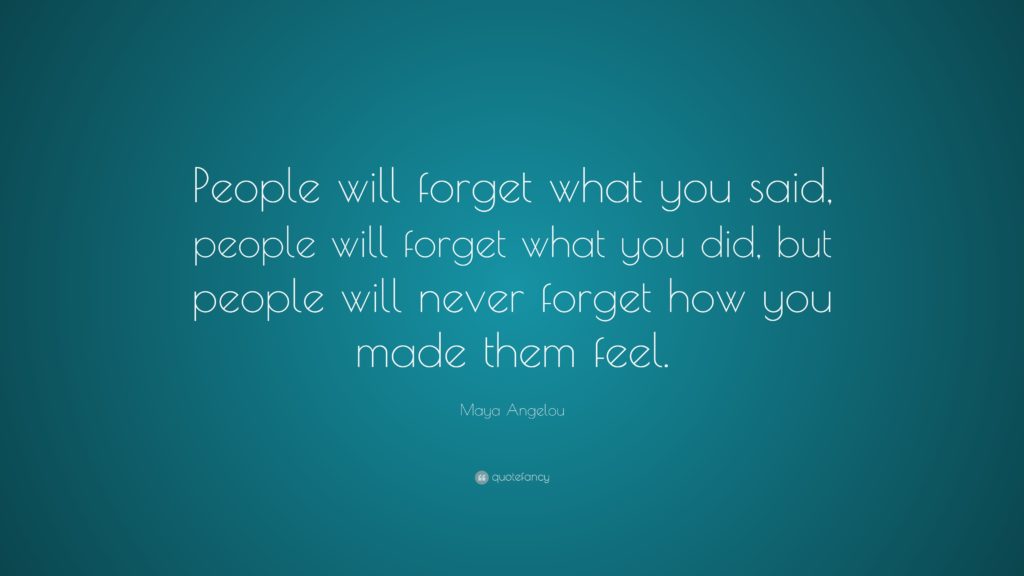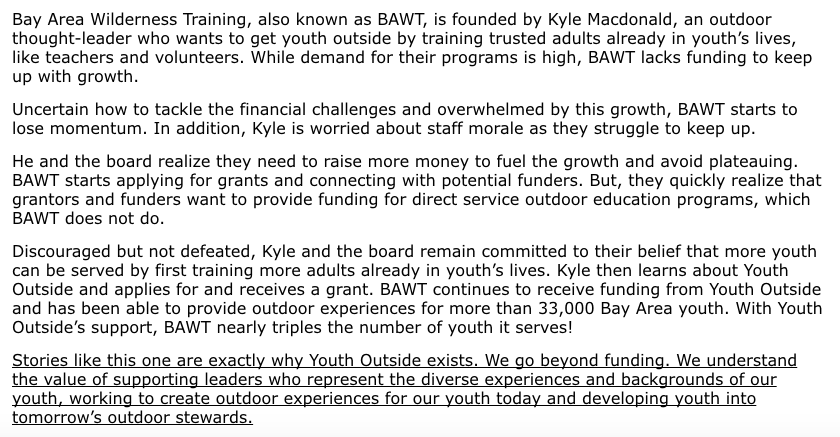Your Organization’s Story: What’s Your Impact?
Posted by Jennie Winton on June 1st, 2016
Posted in Blog, Nonprofit Branding, Nonprofit Communications, Nonprofit Messaging, Storytelling Tags: communication, communications, emotional connection, Five Minute Message, key messages, messaging, Minute Message Model, story, Storytelling
With your Belief Message and your Problem Messages developed, you’re well prepared to give an arresting introduction and explain why your organization is needed. Used effectively, these messages give you a greater chance at keeping your listener interested.
Now it’s time to paint a picture of the impact of your work. What happens as a result of your efforts?
Many nonprofits see the right answer to this question as an invitation to spew facts, figures, and statistics.
It’s been said before that a pie chart never made anyone march on Washington, and a statistic never made anyone cry. We couldn’t agree more. Yet, so many well-meaning organizations can’t wait to tell you the percentage of their clients who achieve a milestone, how many people enrolled in their programs, or how many lives they have touched.
But the best way to communicate your impact is to tell a story.
The story of one person who achieved a milestone, told in a compelling way, will be more meaningful than any pie chart could ever be, no matter how impressive the statistics. Sharing your impact so that your audience feels something means that what they hear will stick with them.
The good news is that you probably have lots of stories you can use, whether or not you’ve uncovered them yet. Here’s how we recommend you structure those stories for the best impact:
- Introduce your characters
- Explain the plot/conflict
- Describe the resolution/outcome
- Explain how only your organization could have created this outcome
That final bit—explaining how only your organization could have created this outcome—is key. It’s meant to reinforce what makes your organization different from all the others. Stories don’t just show what you do, they show how good you are at doing it. And doesn’t everyone want to support an organization that will actually get results?
Check out this video by Doctors Without Borders that does a great job of storytelling. In it, we meet the character, we clearly understand the conflict, and we see how that conflict is resolved as a result of Doctors Without Borders’ work. Most importantly, the story shows the donor in no uncertain terms, how he fits into the solution.
One of the great orators and storytellers in recent times, Maya Angelou, shared a now well-known thought on effective communication.

Making an emotional connection means employing a few storytelling best practices:
- Create suspense by laying out a sequence of events.
- Be specific and use visual language. Help us picture and care about your character.
- Tell your reader, explicitly, what this all means.
Let’s see how Mission Minded client, Youth Outside does it. The underlined portion of the below Impact Message reinforces how only Youth Outside’s unique approach could have resulted in this outcome.
Belief Message

But you know, there’s a problem…
Problem Message

Let me give you an example….
Impact Message

You likely have many stories and anecdotes about your nonprofit in your back pocket. To get started, we recommend developing 3-5 Impact Messages. From there, you can create a culture of storytelling within your organization.
Encourage staff and board to share their experiences and observations with the rest of the team, and then document them! Do not miss out on the opportunity to preserve and record your successes. They are an important part of telling your story and in securing the support your organization needs to achieve its mission.
The next and final post in this series is all about your organization’s Detail Messages, which describe how you make your impact. It’s an opportunity to explain the various projects and programs you work so hard to develop and execute.
Jennie Winton is a Founding Partner of Mission Minded, a 25-year marketing veteran sought for her expertise in branding nonprofit organizations, and a one-on-one leadership coach.
See all posts by Jennie Winton